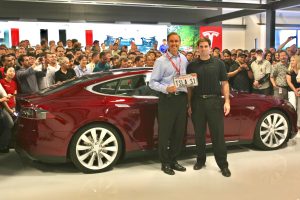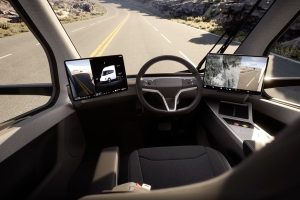- 🚗 Waymo has launched its 6th-generation driverless platform, reducing production costs and enhancing range and compute power.
- 📉 The new platform features fewer sensors due to advanced sensor technology and strategic placement.
- 📷 It includes 16 cameras, 4 LIDAR sensors, 6 radar sensors, and 6 external audio receivers for comprehensive environmental perception.
- 🌆 Waymo has expanded its ride-hailing services to larger areas in San Francisco Bay Area and Los Angeles County.
- 🚦 Waymo faces regulatory scrutiny, including a preliminary NHTSA investigation into several traffic incidents.
- 🏗️ The new platform is produced by Zeekr and maintains an SUV build, different from its 5th-gen Jaguar I-Pace-based model.
Waymo’s Vision: Cost Reduction and Enhanced Performance
Waymo’s newest platform is a testament to the company’s commitment to reducing production costs while enhancing the performance range and compute power of its driverless vehicles. The 6th-generation platform heralds significant advancements over its predecessor, the Jaguar I-Pace-based 5th-generation model, which debuted in 2020.
Key Innovations:
- Cost Efficiency: Waymo has successfully lowered production costs, a critical step toward making autonomous technology more accessible to the masses.
- Advanced Compute Power: The new platform boasts enhanced processing capabilities, enabling more sophisticated decision-making and safer navigation in diverse environments.
A Technological Marvel: Fewer Sensors, Greater Capability
A noteworthy feature of the 6th-generation driverless platform is its clever reduction in the number of sensors required. By leveraging advancements in sensor technology and strategic positioning, Waymo has optimized its sensor suite without compromising vehicle performance.
Sensor Suite Highlights:
- 16 Cameras: Provide comprehensive visual coverage.
- 4 LIDAR Sensors: Offer precise three-dimensional mapping of surroundings.
- 6 Radar Sensors: Detect obstacles and maintain situational awareness.
- 6 External Audio Receivers: Enhance auditory perception for better environment understanding.
These overlapping fields of view enable the vehicle to monitor its surroundings up to 500 meters away, functioning effectively in various weather conditions and lighting situations.
Navigating New Territories: Expansion in California
Waymo’s ambitious expansion into the San Francisco Bay Area and Los Angeles County marks a significant milestone in its growth strategy. By opening its ride-sharing platform, Waymo One, to the public in San Francisco, the company has eliminated the waiting list, allowing residents to experience driverless rides first-hand.
Benefits of Expansion:
- Increased Accessibility: More users can now access Waymo’s innovative services.
- Broader Real-World Testing: Valuable data collection across diverse urban landscapes.
- Enhanced Brand Presence: Strengthening Waymo’s position as a leader in autonomous mobility.
Navigating Regulatory Challenges
Despite these advancements, Waymo faces challenges in the form of regulatory scrutiny. The National Highway Traffic Safety Administration (NHTSA) is currently conducting a preliminary investigation into incidents involving Waymo vehicles disobeying traffic laws or colliding with stationary objects. Additionally, several municipalities and traffic organizations have protested the company’s expansion plans.
Addressing Regulatory Concerns:
- Proactive Engagement: Waymo must maintain active communication with regulators to address concerns and demonstrate safety measures.
- Improved Technology: Continued enhancements to navigation and decision-making algorithms to improve safety.
- Public Education: Increased efforts to inform and educate the public on the benefits and safety of autonomous technologies.
Conclusion: A Step Towards Autonomous Dominance
Waymo’s 6th-generation driverless platform is a remarkable achievement that signifies a major leap in the evolution of autonomous vehicles. With reduced costs, enhanced performance, and strategic expansion into key markets, Waymo is setting new standards in the industry. However, the path to mainstream adoption hinges on navigating regulatory hurdles and continuing to prove the safety and reliability of its technologies.





